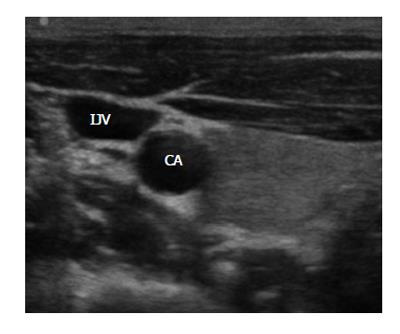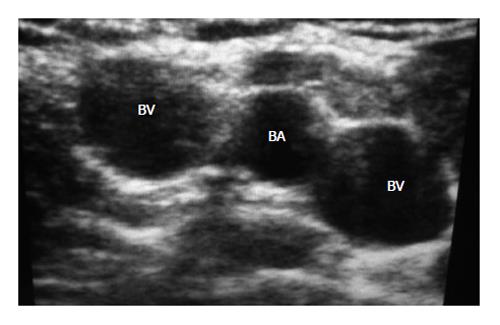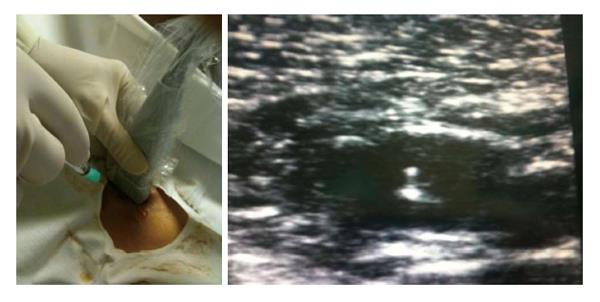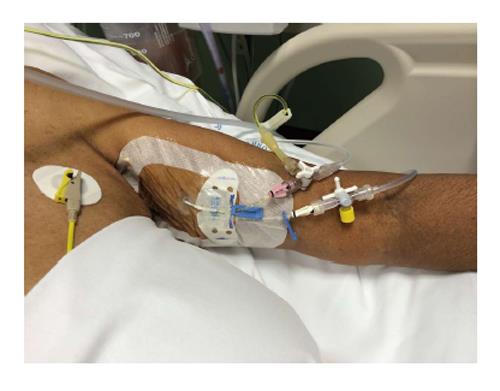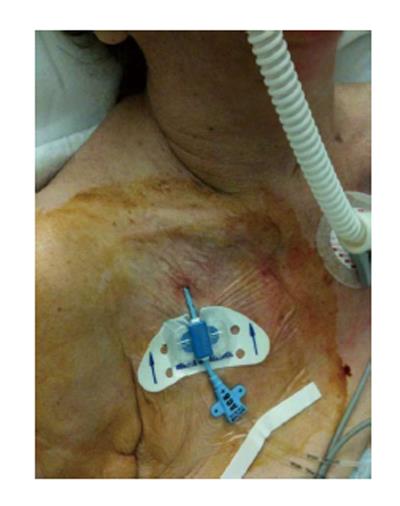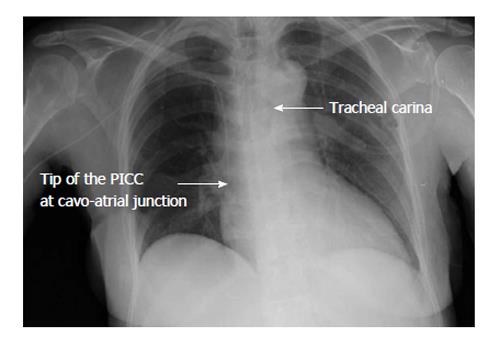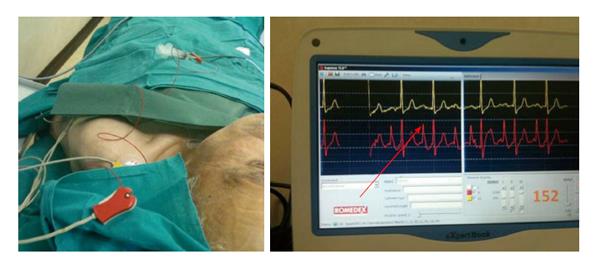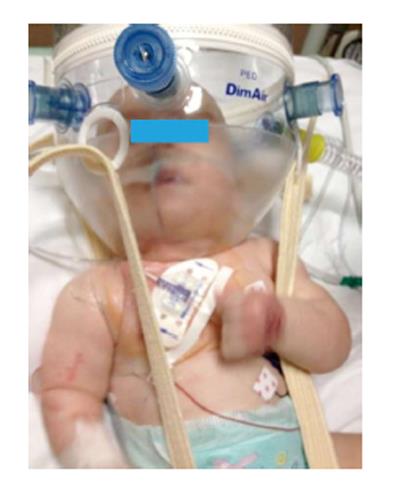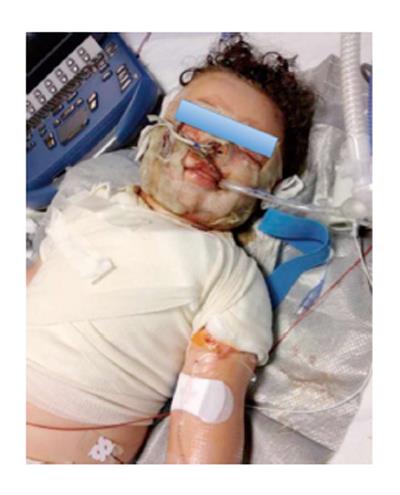Copyright
©2014 Baishideng Publishing Group Inc.
World J Crit Care Med. Nov 4, 2014; 3(4): 80-94
Published online Nov 4, 2014. doi: 10.5492/wjccm.v3.i4.80
Published online Nov 4, 2014. doi: 10.5492/wjccm.v3.i4.80
Figure 1 Ultrasound visualization of the internal jugular vein and the carotid artery on the right side of the neck.
IJV: Internal jugular vein; CA: Carotid artery.
Figure 2 Ultrasound visualization of vessels of right upper arm: the brachial artery is the middle of two brachial veins.
BA: Brachial artery; BV: Brachial veins.
Figure 3 Ultrasound-guided venipuncture of the axillary vein.
Figure 4 Stabilization with a sutureless device of a peripherally inserted central catheter.
Figure 5 Stabilization with a sutureless device of a centrally inserted central catheter.
Figure 6 Post-procedural chest X-ray.
The left arrow shows the tip position of the peripherally inserted central catheter (PICC) that is at cavo-atrial junction (between the superior vena cava and the right atrium). The right arrow shows the tracheal carina.
Figure 7 The electrocardiographic method (intracavitary electrocardiography).
The red arrow shows the maximal height of P-wave detectable when the catheter tip is at cavo-atrial junction (intracavitary EKG = red line, lead II). The yellow line is the surface EKG (lead III). EKG: Electrocardiography.
Figure 8 A neonate in intensive care unit with a centrally inserted central catheter.
Figure 9 A children in intensive care unit with a peripherally inserted central catheter.
- Citation: Cotogni P, Pittiruti M. Focus on peripherally inserted central catheters in critically ill patients. World J Crit Care Med 2014; 3(4): 80-94
- URL: https://www.wjgnet.com/2220-3141/full/v3/i4/80.htm
- DOI: https://dx.doi.org/10.5492/wjccm.v3.i4.80









